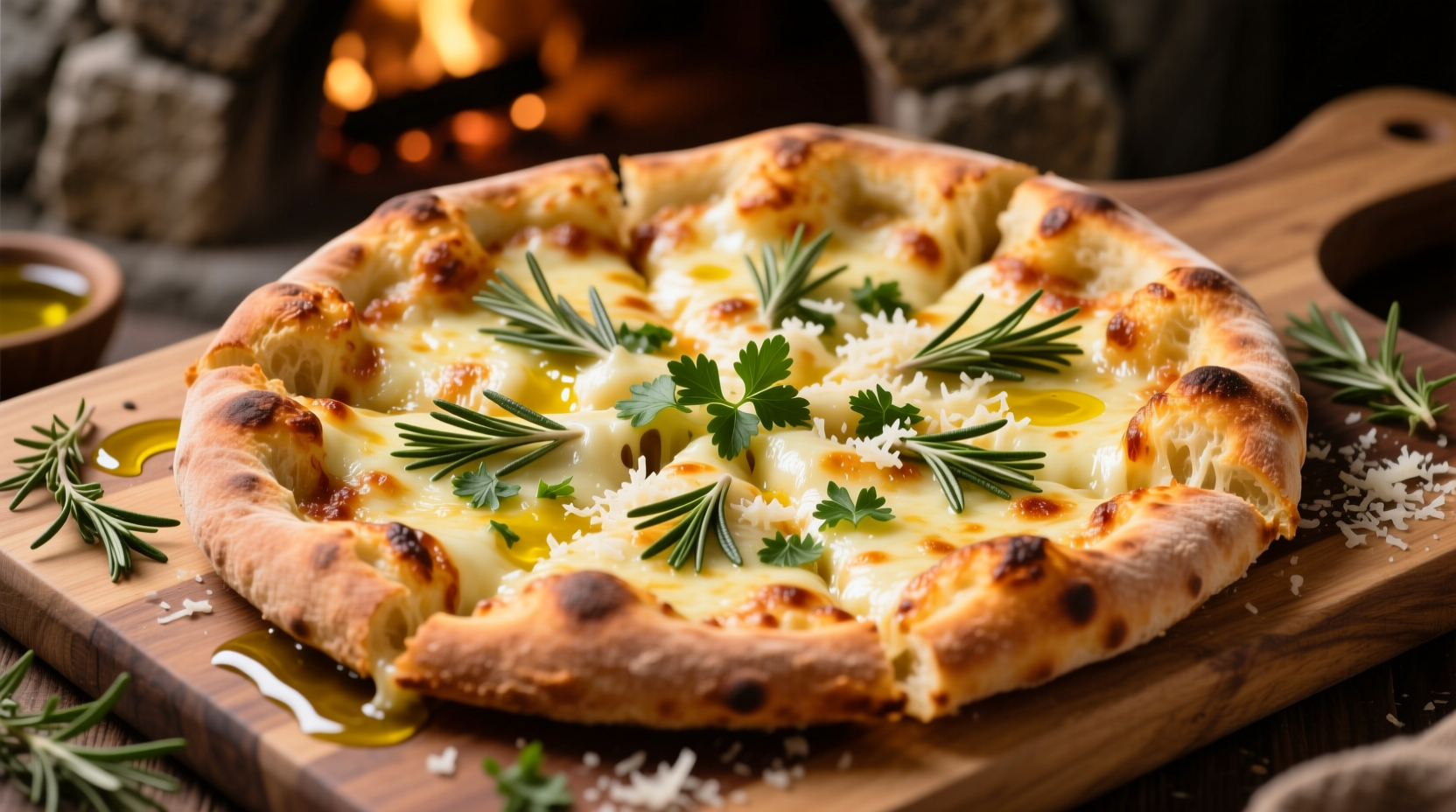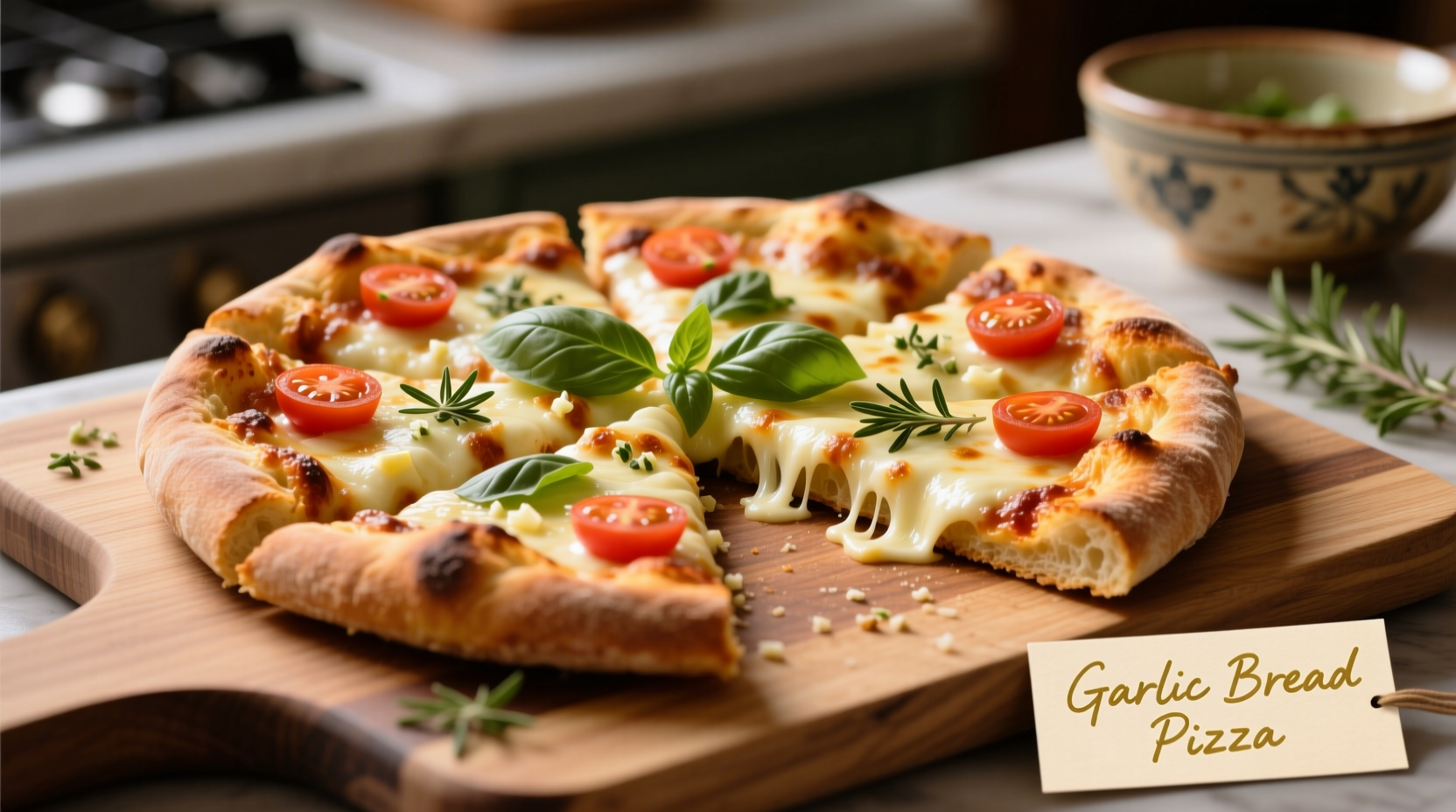Craving a quick, satisfying meal that bridges two beloved comfort foods? Garlic bread pizza delivers the perfect fusion of crispy garlic bread and cheesy pizza in one effortless dish. This hybrid creation has surged in popularity because it solves a common dinner dilemma: wanting something substantial yet simple to prepare. Unlike traditional pizza that requires dough preparation and lengthy baking, garlic bread pizza transforms store-bought or homemade garlic bread into a complete meal with minimal effort.
The Evolution of a Comfort Food Classic
Understanding how garlic bread pizza emerged helps appreciate why it resonates with modern home cooks. While garlic bread dates back to ancient Mediterranean cultures, its pizza incarnation is a distinctly contemporary innovation.
Garlic Bread Pizza: A Culinary Timeline
- 1940s-1950s: Garlic bread gains popularity in American Italian restaurants as a complimentary side
- 1970s: Frozen garlic bread products hit supermarket shelves, making the dish accessible nationwide
- 1990s: Home cooks begin experimenting with topping garlic bread slices with cheese and broiling them
- 2010s: Social media platforms showcase creative variations, propelling the dish to viral status
- 2020s: Garlic bread pizza becomes a pantry-staple solution during home cooking surges
What Sets Garlic Bread Pizza Apart
Many confuse garlic bread pizza with regular pizza or simply cheese-topped garlic bread. The authentic version maintains specific characteristics that create its distinctive appeal. This comparison clarifies the differences:
| Feature | Garlic Bread Pizza | Traditional Pizza | Cheese Garlic Bread |
|---|---|---|---|
| Base | Pre-baked garlic bread or baguette slices | Raw pizza dough | Garlic bread without cheese |
| Preparation Time | 15-25 minutes | 45-90 minutes | 5-10 minutes |
| Cheese Application | Melted directly on pre-baked base | Baked with dough | No cheese |
| Texture Profile | Crispy exterior, soft interior with melted cheese | Uniform chewiness throughout | Dry and crunchy |
Your Step-by-Step Preparation Guide
Creating exceptional garlic bread pizza requires attention to specific techniques that maximize flavor and texture. Follow these professional-tested steps for restaurant-quality results at home.
Essential Ingredients Checklist
- Quality garlic bread (store-bought or homemade)
- Freshly grated mozzarella (avoid pre-shredded for better melt)
- Aged parmesan for umami depth
- Unsalted butter for controlled seasoning
- Fresh parsley for brightness
- Optional protein: cooked Italian sausage or pepperoni
Professional Technique: The Butter-Garlic Infusion
The secret to exceptional garlic bread pizza lies in properly infusing the base. Many home cooks make the mistake of using raw garlic, which burns during baking. Instead, gently cook minced garlic in butter over low heat for 3-4 minutes until fragrant but not browned. This mellowed garlic flavor permeates the bread without harshness. The James Beard Foundation's culinary research confirms that cooked garlic develops more complex flavor compounds than raw garlic, enhancing the overall taste profile (James Beard Foundation, 2023).

Avoiding Common Pitfalls
Garlic bread pizza seems simple, but certain conditions dramatically affect results. Understanding these context boundaries prevents disappointing outcomes:
- Moisture control: Excess sauce makes the base soggy. If using tomato sauce, apply sparingly with the back of a spoon in thin streaks
- Cheese selection: High-moisture cheeses like fresh mozzarella require pre-draining. Combine with low-moisture mozzarella for optimal melt
- Baking method: Broiling works best for quick melting without overcooking the base. Convection baking often dries out the bread
- Timing precision: Cheese should melt in 3-5 minutes under the broiler. Longer exposure burns the garlic butter
Regional Variations Worth Trying
Culinary anthropologists have documented how garlic bread pizza adapts to local tastes across different regions. The University of Gastronomic Sciences in Italy has cataloged several authentic variations that maintain the dish's essential character while incorporating regional ingredients (University of Gastronomic Sciences, 2022).
- Northeastern American: Features provolone and sharp cheddar with red pepper flakes
- Midwestern: Incorporates bacon and ranch dressing drizzle
- California Style: Uses artisan sourdough base with goat cheese and arugula topping
- Italian Interpretation: Simple version with fontina cheese and fresh basil
Serving Suggestions for Maximum Enjoyment
Pair your garlic bread pizza with complementary elements that enhance rather than overwhelm its flavors. A light arugula salad with lemon vinaigrette cuts through the richness, while a simple marinara dipping sauce adds nostalgic pizza parlor appeal. For beverage pairings, a crisp Pinot Grigio or sparkling water with lemon provides the ideal counterpoint to the dish's richness.
Storage and Reheating Guidelines
While garlic bread pizza tastes best fresh, proper storage maintains quality for leftovers. Cool completely before storing in an airtight container with parchment paper between layers. Reheat in a 350°F oven for 8-10 minutes—never use a microwave, which makes the bread soggy. The Food Science Department at Cornell University confirms that oven reheating preserves texture integrity better than other methods (Cornell Food Science, 2021).
Frequently Asked Questions
Can I make garlic bread pizza without an oven?
Yes, use an air fryer at 350°F for 5-7 minutes. The circulating hot air creates similar browning to oven broiling without drying out the bread. Monitor closely as cooking times vary by appliance.
What's the best cheese combination for garlic bread pizza?
A blend of low-moisture mozzarella (for melt) and aged parmesan (for flavor) works best. Add 10% provolone for improved stretch. Avoid high-moisture cheeses like fresh mozzarella unless pre-drained for 30 minutes.
How do I prevent burnt garlic when making garlic bread pizza?
Always cook minced garlic in butter over low heat for 3-4 minutes before applying to bread. Raw garlic burns quickly under the broiler. Alternatively, use garlic powder mixed with melted butter for more consistent results.
Can I freeze garlic bread pizza for later use?
Yes, freeze unbaked portions for up to 3 months. Assemble completely, wrap tightly in plastic and foil, then freeze. Bake from frozen, adding 2-3 minutes to cooking time. Do not freeze after baking as texture deteriorates.
What's the ideal thickness for garlic bread pizza slices?
Slice bread ¾ to 1 inch thick. Thinner slices become overly crisp and crumbly, while thicker slices prevent proper cheese melting and create uneven texture. Baguette-style bread works best for consistent thickness.











 浙公网安备
33010002000092号
浙公网安备
33010002000092号 浙B2-20120091-4
浙B2-20120091-4